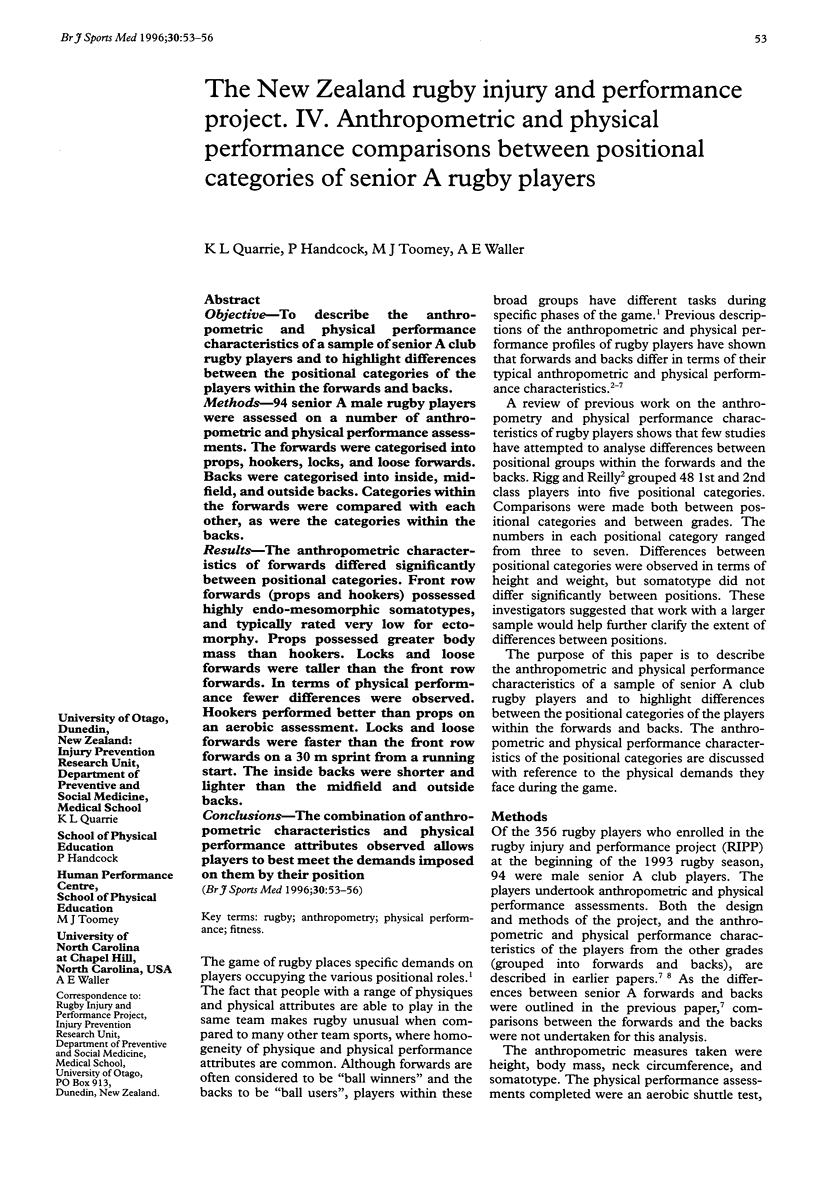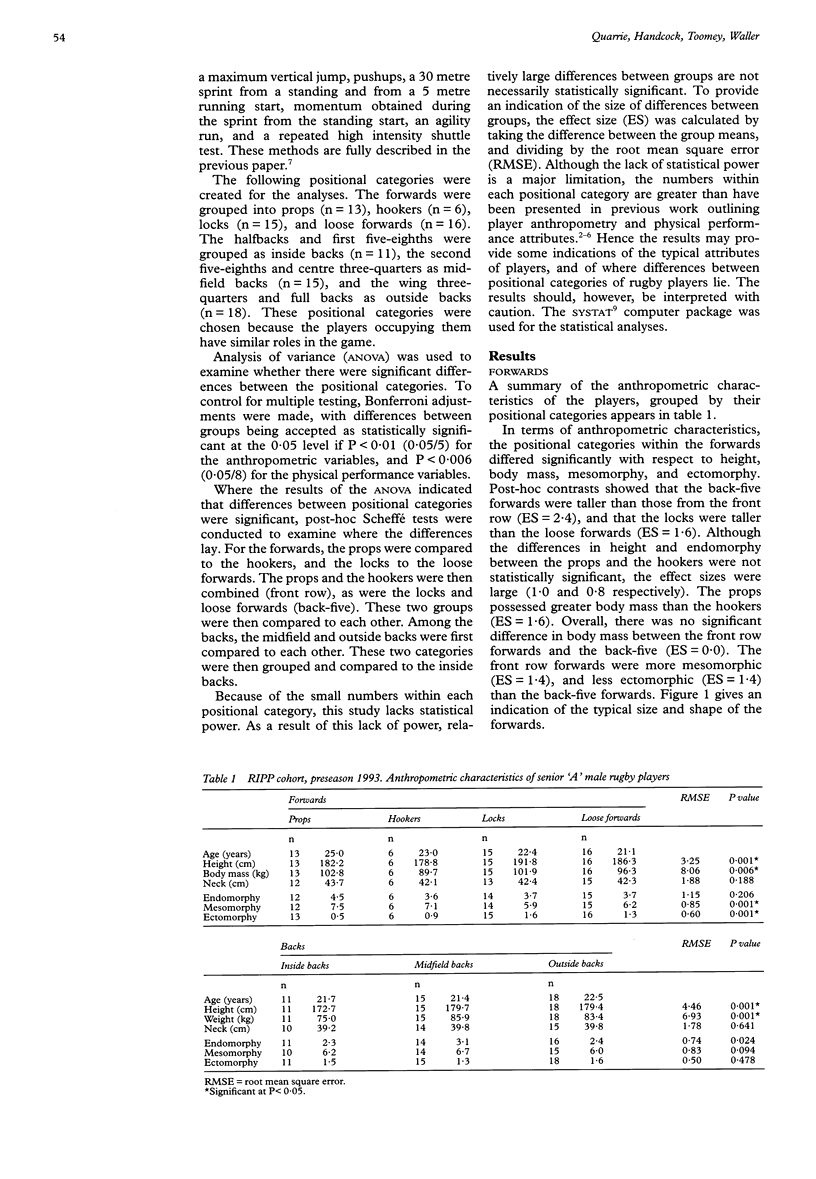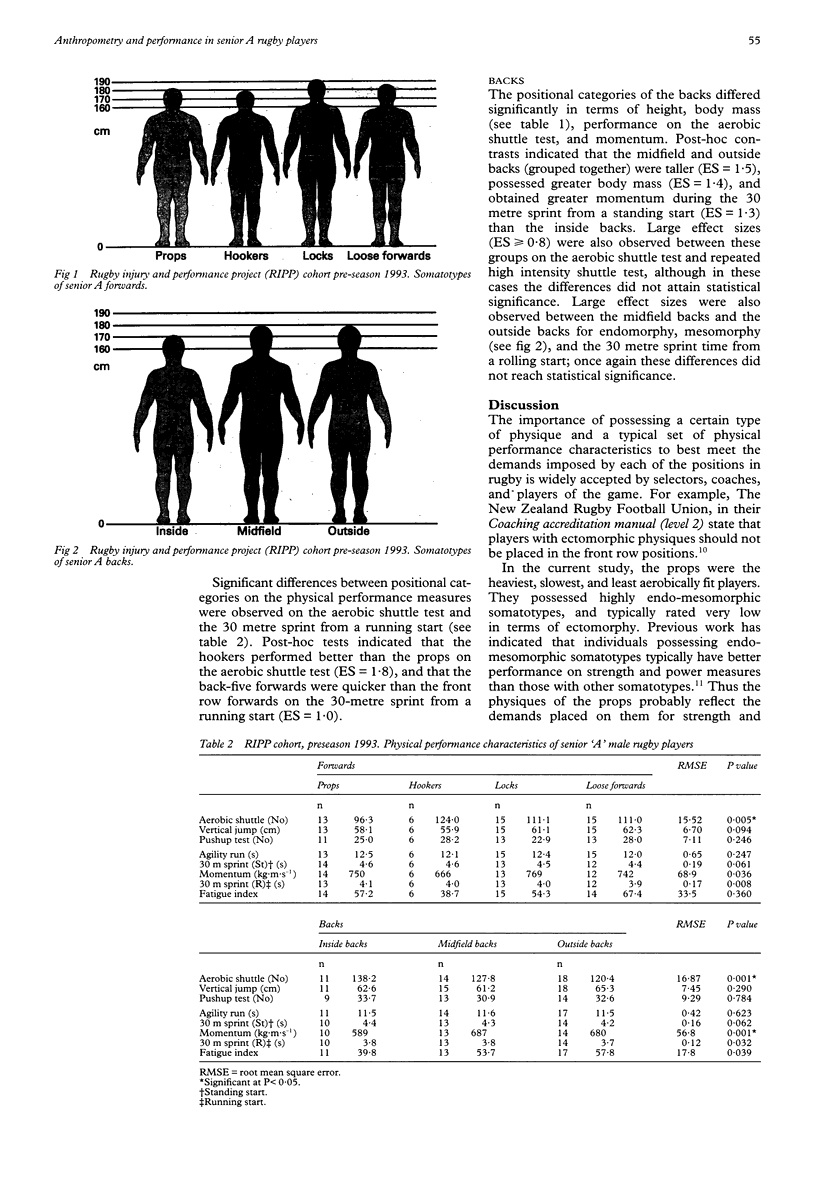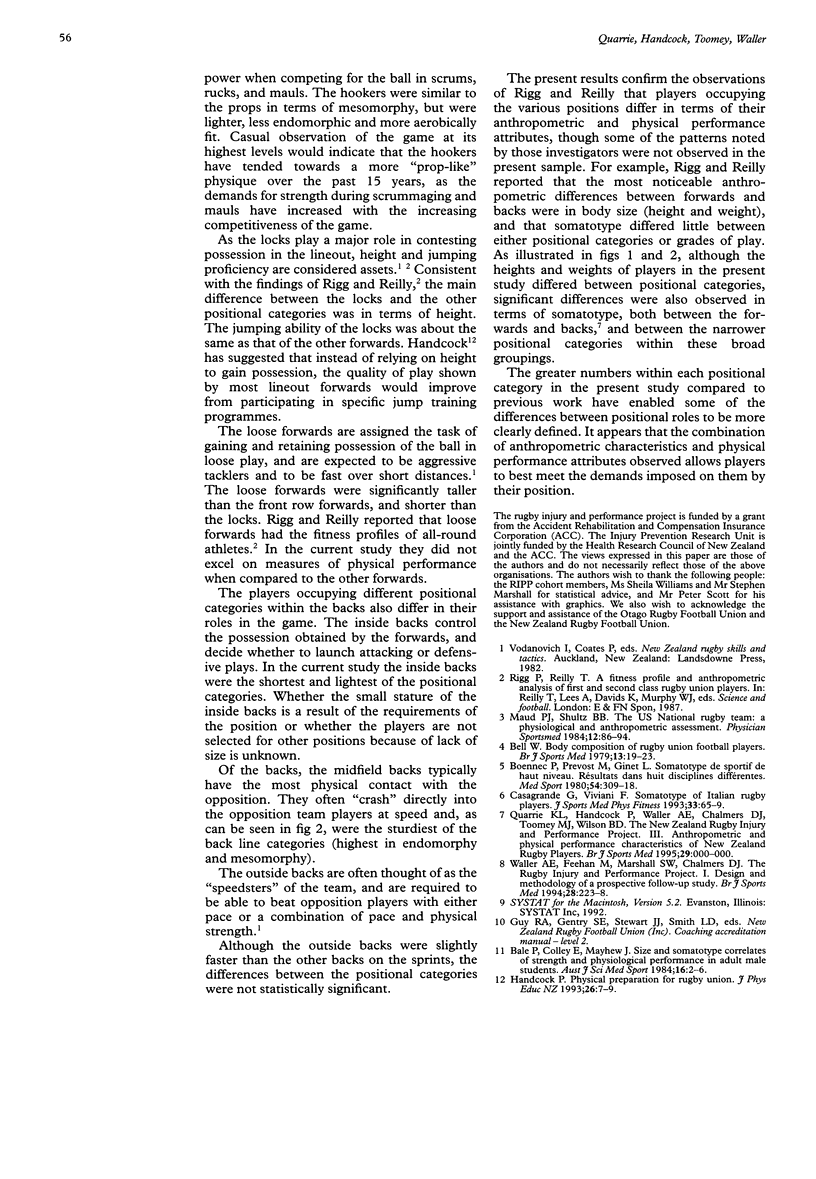Abstract
OBJECTIVE--To describe the anthropometric and physical performance characteristics of a sample of senior A club rugby players and to highlight differences between the positional categories of the players within the forwards and backs. METHODS--94 senior A male rugby players were assessed on a number of anthropometric and physical performance assessments. The forwards were categorised into props, hookers, locks, and loose forwards. Backs were categorised into inside, midfield, and outside backs. Categories within the forwards were compared with each other, as were the categories within the backs. RESULTS--The anthropometric characteristics of forwards differed significantly between positional categories. Front row forwards (props and hookers) possessed highly endo-mesomorphic somatotypes, and typically rated very low for ectomorphy. Props possessed greater body mass than hookers. Locks and loose forwards were taller than the front row forwards. In terms of physical performance fewer differences were observed. Hookers performed better than props on an aerobic assessment. Locks and loose forwards were faster than the front row forwards on a 30 m sprint from a running start. The inside backs were shorter and lighter than the midfield and outside backs. CONCLUSIONS--The combination of anthropometric characteristics and physical performance attributes observed allows players to best meet the demands imposed on them by their position.
Full text
PDF



Selected References
These references are in PubMed. This may not be the complete list of references from this article.
- Bell W. Body composition of rugby union football players. Br J Sports Med. 1979 Apr;13(1):19–23. doi: 10.1136/bjsm.13.1.19. [DOI] [PMC free article] [PubMed] [Google Scholar]
- Casagrande G., Viviani F. Somatotype of Italian rugby players. J Sports Med Phys Fitness. 1993 Mar;33(1):65–69. [PubMed] [Google Scholar]
- Waller A. E., Feehan M., Marshall S. W., Chalmers D. J. The New Zealand Rugby Injury and Performance Project: I. Design and methodology of a prospective follow-up study. Br J Sports Med. 1994 Dec;28(4):223–228. doi: 10.1136/bjsm.28.4.223. [DOI] [PMC free article] [PubMed] [Google Scholar]


